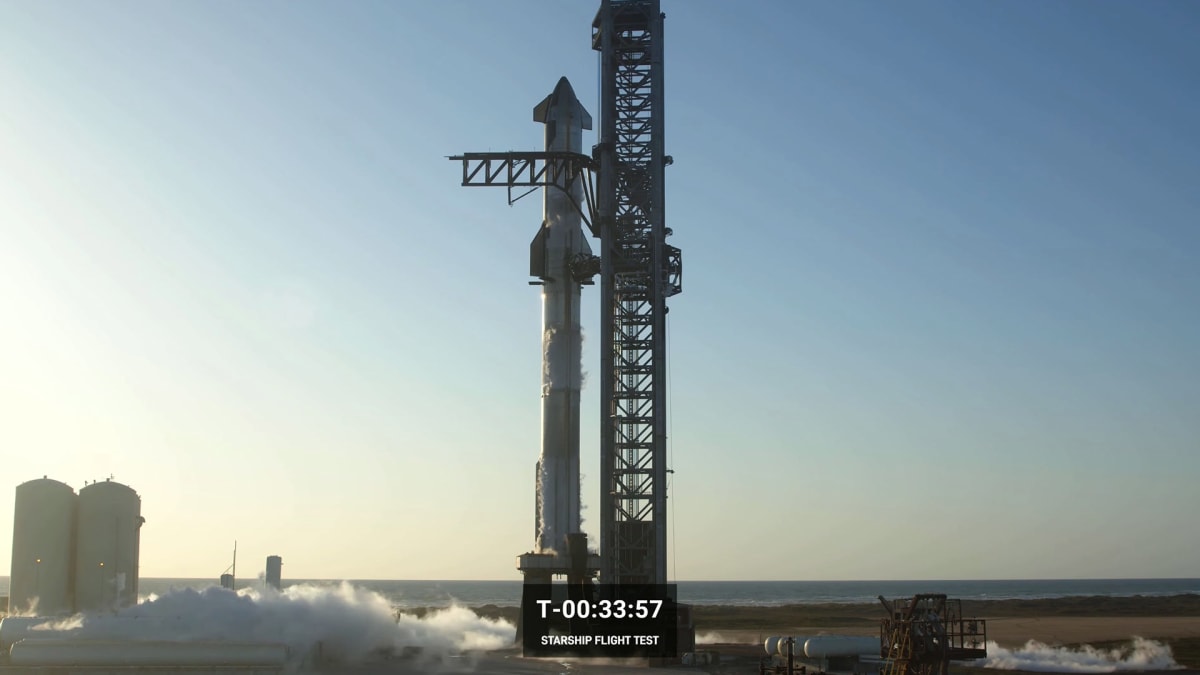
Elon Musk and his rocket and satellite company SpaceX made history on April 20 by launching the world's most powerful rocket.
The rocket, known as the Starship, is a system that is expected to transport humans to planet Mars and return to the moon, which makes the first orbital flight of this reusable rocket historically significant. A successful flight would have been a major step for humanity and for Musk, who has given himself the mission of empowering humans to live on the red planet in our lifetime.
Things did not go as hoped and expected, as the giant Starship rocket exploded in the air over Texas, a few minutes after taking off. According to SpaceX, the mishap was due to a "rapid unscheduled disassembly” before stage separation. It was the first test flight, without passengers, of this vehicle developed by SpaceX.
The flight plan was as follows: approximately three minutes after takeoff, the Super Heavy booster was to break away and fall back into the Gulf of Mexico.
Starship in Slow Motion
The Starship rocket would then turn on its six engines and continue its ascent alone, up to an altitude of more than 93 miles (150 kilometers.) After having made a little less than a full orbit around the Earth for about an hour, it would fall back into the Pacific Ocean. But nothing went as planned.
"As if the flight test was not exciting enough, Starship experienced a rapid unscheduled disassembly before stage separation," SpaceX has explained.
While footage of the flight was broadcast by TV stations and SpaceX's YouTube channel, viewers weren't able to see close-ups of Starship. They only had distant views.
Musk, however, just shared impressive close-up images of the rocket in a video on Twitter. In the video, one can see the impressive rocket lift off from the SpaceX base in Chica Boca, Texas. In this 22-second video, we are in a front row seat during the liftoff. We see a close-up of the monster rise in the middle of heavy clouds of smoke. It is a breathtaking show of force. Musk said it is in slow motion.
"Starship liftoff in slow motion," the billionaire, who was in the control room on launch day according to footage from SpaceX, tweeted, on April 21, above the video.
The video has already been viewed by over 27 million Twitter users as of this writing.
"Insane!" commented one Twitter user.
"This looks like a video game cutscene," quipped another user.
"🤔 looks real time! Those 10 seconds waiting for Starship to clear the plume were nailbiters," said another Twitter user.
The techno king later shared what appears to be an image of the Starship seconds after the launch. This image of the launch of the vehicle had not yet been seen. Its merit is that it helps fuel the enthusiasm that prevailed within seconds of Starship lifting off.
Downplay the Explosion?
The video and image appear to be Musk's way of riding the excitement around the world about Starship's launch and downplaying its explosion. The billionaire also seems to want to send the message that the explosion was just a necessary step, with a problem that will be corrected very quickly.
He has already indicated that a new orbital flight will be attempted within one to two months.
"Looks like we can be ready to launch again in 1 to 2 months," Musk announced on April 21, 24 hours after the explosion.
Aware that this schedule is hyper ambitious, Musk then explained, on April 22, that the engines may have caused unexpected damage.
"Still early in analysis, but the force of the engines when they throttled up may have shattered the concrete, rather than simply eroding it," he argued. "The engines were only at half thrust for the static fire test."
Starship is, according to Musk, "the only way for us to become a multiplanet civilization."
At over 393 feet (120 meters,) Starship is longer than both NASA's new mega-rocket, SLS (321 feet or 98 meters), which first blasted off in November, and the legendary Saturn V, the Apollo lunar program rocket (364 feet or 111 meters).
The black and silver behemoth had never flown in its full configuration before, with its super-powerful first stage, called Super Heavy and equipped with no less than 33 engines.
Only the second stage of the vehicle, the Starship spacecraft which by extension gives its name to the entire rocket, had carried out suborbital tests (at an altitude of around 6 miles or 10 kilometers). It has been chosen by NASA to become, in a modified version, the lander of the Artemis 3 mission, which will bring astronauts back to the lunar surface for the first time in more than half a century, officially in 2025.
The orbital launch of Starship is viewed as a leap forward for humanity, as a stepping stone for reaching the Moon, then Mars, while carrying tons of cargo. Starship is designed to quickly replace the entire current range of SpaceX launchers and separate freight and manned transport systems, known as the Falcon Heavy and the Falcon 9, used for launching satellites, resupplying the International Space Station, and rotating crews.
The Starship explosion is not a complete failure for SpaceX, experts say. The fact that the rocket succeeded in taking off from its launch pad is already a huge achievement. The purpose of the flight, say these experts, was above all to collect as much data as possible to improve the following prototypes and that is what happened, because the rocket was able to take off.







